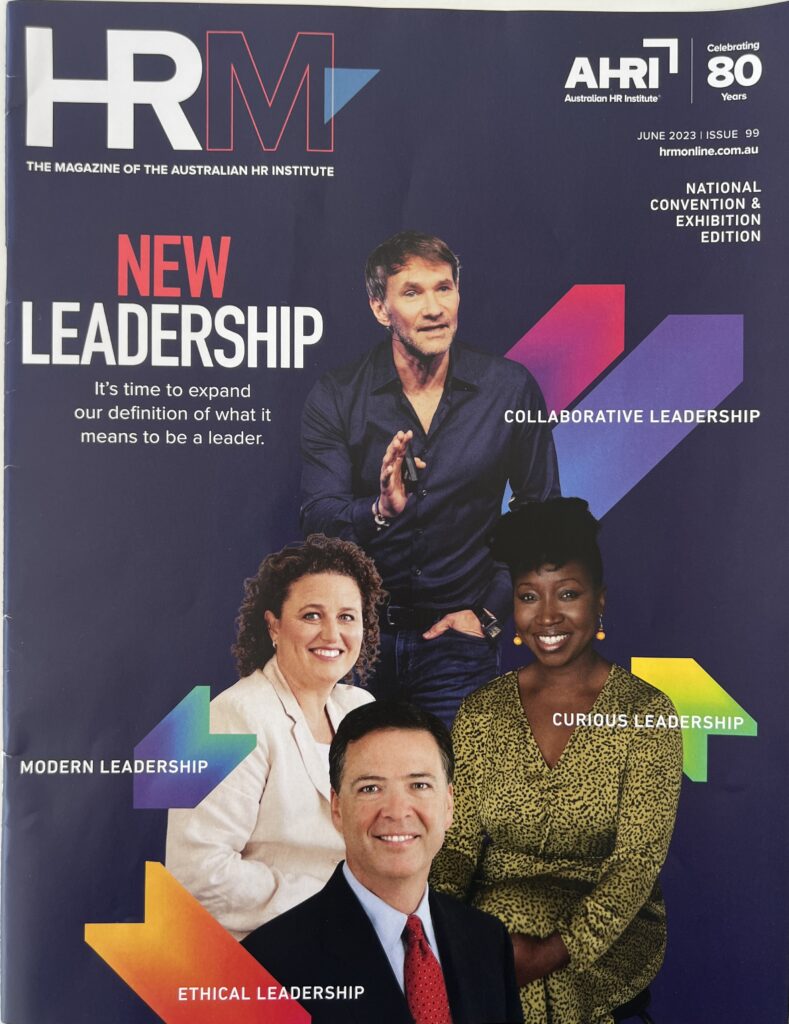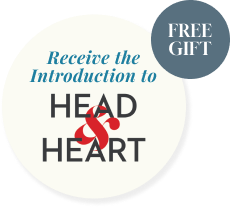
Complete the Head & Heart Leader Scale™ and receive a free, personalised report here.
Complete the Head & Heart Leader Scale™ and receive a free, personalised report here.
By Kate Neilson
19 June 2023
Modern-day organisations require a combination of head and heart-based leadership, says Dr Kirstin Ferguson AM. The challenge is in knowing how to strike the right balance.
If the building is on fire, you don’t want a leader to ‘empower’ you to find the emergency exit. You want to be told exactly where it is and how to get out. This is an example someone shared with me a few years ago during a conversation about effective leadership, and it has stuck with me.
It’s a perfect example of the nuances required when trying to define modern leadership. It’s not effective to simply say, “Leaders need to demonstrate more empathy in all circumstances,” just as you’d never hear someone say, “Leaders should always rule with an iron fist.” Modern leadership is a delicate balancing act, and knowing when to push and when to pull, or when to coach versus when to direct, is an artform.
This balancing act is something Dr Kirstin Ferguson AM, author, columnist and award-winning leadership expert, is passionate about exploring. Ferguson’s work began with her own extensive academic research, as well as findings drawn from interviews with a wide range of diverse leaders, and culminated in her latest book, Head & Heart: The Art of Modern Leadership.
“The art of modern leadership is knowing when you need to use command and control, or head-based leadership, and when you might instead need to draw upon humility, empathy or other heart-based leadership skills,” says Ferguson.
“For example, if you’re a police officer trying to arrest someone with empathy who’s running away from you, that won’t be particularly helpful. But when you’re back at the station and see that the person is vulnerable or at risk, that same officer will need to draw on a whole range of empathy and self-awareness skills.”
But that’s not how we’ve traditionally been taught how to lead. If you assess the head and heart-based leadership attributes (below), it’s clear that much of the leadership coaching, training and role modelling we’ve been exposed to has centred around head-based leadership skills.
Head-based leadership attributes
Curiosity – having a genuine thirst for filling gaps in our knowledge.
Wisdom – assessing what is known and unknown, weighing up risk and reward, searching for data or evidence, and then assessing the best possible path forward.
Perspective – being able to read a room, such as seeing who’s missing from the room or what’s going on outside the room.
Capability – having a growth mindset towards whatever it is we do, whether it’s a a profession, trade or hobby.
Heart-based leadership attribute
Humility – being willing to seek out the contributions of others and accept our limitations.
Self-awareness – having a high level of insight into our character, abilities and limitations, as well as being aware of the impact we have on those around us.
Courage – speaking up for what we believe in, even in the face of pressure from others not to do so, while creating cultures where others can speak up as well.
Empathy – putting ourselves in the shoes of others to comprehend their feelings without taking on those feelings ourselves, while willingly, authentically and respectfully listening to and engaging with diverse points of view.
“Head-based leadership attributes rely on things that are really tangible. It’s the stuff we get rewarded for at school or university, or when we’re going for a promotion. That’s why we’re all pretty good at leading with our heads,” says Ferguson, who will be a speaker at AHRI’s National Convention and Exhibition in August.
“It has been ingrained in us that those combinations of head-based skills are where you can live as a leader. You’ll deliver your KPIs, you’ll probably get promoted, you’ll take home a paycheck. It’s all very safe. But if you only lead with those skills, you will be limited in your life and career.”
Having sat on boards and chaired remuneration and people committees, she says head-based leadership alone is no longer what organisations require in their leaders.
“Boards are not only looking for CEOs who are only technically brilliant and have high levels of industry knowledge. We need leaders who can also lead with the heart and, importantly, who understand the difference.”
This means organisations and individuals need to go through a period of unlearning and be supported to seek out and polish heart-centric skills.
“We need to integrate the way we lead at home with the way we lead at work. We all have the skills to lead with the head and the heart. But sometimes we leave the heart-based skills at home.” – Dr Kirstin Ferguson AM
Part of this unlearning phase is about considering organisational factors that might be working against your mission to change up leadership styles. Your reward and recognition strategy is a great place to start.
If you’re only rewarding people for their financial achievements, you’re likely to see leaders who are focused on this at all costs. That might mean they put important things like motivating and supporting their teams on the backburner in pursuit of their ‘hard’ targets, like increasing their client load or other bottom-line activities. When this is the norm, everyone loses.
“I think we make a cursory effort to look at the heart-based attributes of leaders. But ultimately, you can think of endless examples where people who bring in lots of clients and generate lots of revenue, [but] have pretty poor emotional intelligence, still get promoted and rewarded.”
So why not consider adding new metrics into leaders’ KPIs, like: How many people in their team have been promoted in the last 12 months? How effective has their feedback been to develop those they lead? What kind of personal development programs have they sought out for themselves and those they lead?
The first thing to note about heart-based leadership attributes is that they shouldn’t be considered or called ‘soft skills’ – we need to bust this myth for good. There are many other ways we should be talking about them: essential skills, people skills, power skills.
Whatever you call them, it’s important that the difference they can make from a cultural, productivity and bottom-line perspective is understood from the top down.
For example, a leader’s ability to admit to the limitations of their own knowledge or expertise can be a powerful tool.
“Not knowing the answer to something is a relationship-builder, not a relationship-destroyer,” says Ferguson. “It builds trust in others. You can ask others in the room [for their opinion]. You might say, ‘I know you’ve got a lot more experience in this area than the rest of us. What do you think?’”
A head-and-heart leader is someone who can both guide and empower an individual in the same breath.
“It’s a conscious act by leaders to recognise that they are coaches. They are there to build others, not prove they’re the smartest person in the room.”

Consistency is a key ingredient in effective head-and-heart leadership, she says.
“I think what our current Prime Minister has demonstrated is that he actually walks the talk,” says Ferguson. “For example, what struck me recently with Albanese wasn’t necessarily the fact that he was the first Prime Minister to march in Mardi Gras. It’s that it was the 30th Mardi Gras he’d marched in. For me that was more important.
“This isn’t a guy who has just seen an opportunity to be the first prime minister to do it. He’s consistently been an ally for the LGBTQIA+ community, and that’s how you know it’s genuine.”
It’s also important to be a leader who hears information and is willing to change their position on certain things.
“It’s also not great to hold too strong to your beliefs if you’ve got data telling you it’s not quite right.”
We also need to stop thinking that leadership begins and ends when we walk through the doors of our workplace, says Ferguson.
“We need to integrate the way we lead at home with the way we lead at work. We all have the skills to lead with the head and the heart. But sometimes we leave the heart-based skills at home.”
At the same time, we need to move away from viewing leadership purely through a formal lens. Informal leadership can be demonstrated by anyone, and it’s crucial to success in an increasingly dispersed workforce that’s moving away from structured, hierarchical ways of working.
“Even if you’re the most junior person in the HR team, you have an important role to play. You are a role model to others in the organisation and you are leading in your sphere of responsibility.”
Operate as if you are the CEO of your own role, she says – because you are. Respect formal hierarchy, of course, but make sure to advocate for yourself and stretch your skills where possible. Take the initiative and look for opportunities to step into more responsibility.
“That results in a shifted mindset and means you’re more than just a cog in the wheel,” she says.
As Ferguson puts it in her book, ‘Leadership is a privilege, not an entitlement,’ and we need to start thinking of it in this way.
“Leadership literally was an entitlement for some people hundreds of years ago, but now it’s not something we should take lightly. We need to remember that if we choose to act in a certain way, we could have an impact on people for a long time.
“It might seem pretty minor to you, the leader – like a piece of feedback that you deliver insensitively. But to that person, it could be absolutely shattering. That moment will be remembered by that person forever.
“That’s the responsibility you hold as a leader. You need to get that right. Whether you’re a parent or the Prime Minister, we need to think about the legacy we want to leave. We are there to help others.”
A longer version of this article first appeared in the June 2023 edition of HRM Magazine.
Dr Kirstin Ferguson will be sharing more leadership advice at AHRI’s National Convention in August. Book your ticket now to hear from a range of inspiring speakers.





